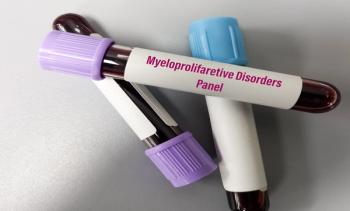
Vivek Subbiah, MD, says artificial intelligence (AI) should assist clinicians in precision oncology, not replace human decision-making.

Vivek Subbiah, MD, says artificial intelligence (AI) should assist clinicians in precision oncology, not replace human decision-making.

Explore the implications of the Most Favored Nation Order on US drug pricing reform and its potential impact on patient access and innovation.

Surgeons are more likely to perform opportunistic salpingectomy when their peers have done so, underscoring the impact of physician networks in ovarian cancer prevention.

Efgartigimod shows promising efficacy over IV immunoglobulin in treating impending myasthenic crisis in patients with myasthenia gravis.

UC Davis Health enhances patient care through a shared services center, ensuring continuity of care and optimizing pharmacy growth strategies.

David Rometo, MD, reflects on the sustainability of incremental weight loss programs and aggressive diets.

US pediatric influenza-associated encephalopathy (IAE) cases surged during the 2024-2025 season, highlighting severe health risks and the need for better surveillance.

The positive aspects of the executive order focused on homeless individuals, have been overshadowed by aspects not viewed as positively.

A self-help app based on cognitive behavioral therapy improved depression, self-esteem, and quality of life in adults with intellectual disabilities.

Telemedicine improved the quality of life and inhaler technique among patients with advanced-stage chronic obstructive pulmonary disease (COPD).

Artificial intelligence, automation, and expanded pharmacist roles help reduce administrative burdens, improve workflow, and support providers in delivering cancer care, according to Scott Soefje, PharmD, MBA, BCOP.

Researchers developed a first-of-its-kind panel to track receptor expression and predict therapy response.

The study highlighted pain, fatigue, and functional status as key early warning signs.

Nanopore sequencing of chronic lymphocytic leukemia (CLL) may be a particularly good fit in under-resourced areas due to its lower cost and smaller laboratory footprint.

A review found that assessing for health-related quality of life (HRQOL) was not frequently done in studies related to non–small cell lung cancer (NSCLC).

Early research has identified several antigens that could help facilitate the use of chimeric antigen receptor T cells in small cell lung cancer.

Cemiplimab has been approved as the first immunotherapy for high-risk cutaneous squamous cell carcinoma (CSCC), significantly improving disease-free survival rates.

Social determinants of health disproportionately impact patients' ability to maintain and achieve their weight loss goals.

Research reveals that Medicaid accountable care organization (ACO) designs significantly impact maternal health outcomes, highlighting the importance of structural partnerships in care delivery.

Emotional well-being and social engagement significantly impact quality of life for patients with soft tissue sarcoma post-surgery.

The class of diabetes drug has a protective effect on the kidneys for reasons beyond glucose control.

Artificial intelligence (AI) is expanding clinical trial access and enabling drug repurposing, according to Vivek Subbiah, MD.

Funding cuts for research intended to make treatment and cures available and accessible for patients with HIV could affect HIV care in the long term.

Empathy and communication strengthen patient-provider relationships and improve respiratory care outcomes, as discussed at the European Respiratory Society (ERS) Congress.

Increased workload among nurses in the neonatal intensive care unit (NICU) may reduce the quality of care for individual infants, as certain tasks are more likely to be missed.

David Rometo, MD, weighs various weight loss treatments, their success, and sustainability.

New treatment options are needed for patients with accelerated-phase or blast-phase myeloproliferative neoplasms (MPNs) ineligible for standard care.

The approval is the first in more than a decade for an idiopathic pulmonary fibrosis treatment.

David Rometo, MD, of UPMC, addresses stigma surrounding obesity and group setting weight loss intervention therapies and how consults benefit patients.

Weight loss medications show promise in improving liver health for those with chronic liver conditions, a review found.

259 Prospect Plains Rd, Bldg H
Cranbury, NJ 08512
© 2025 MJH Life Sciences®
All rights reserved.
